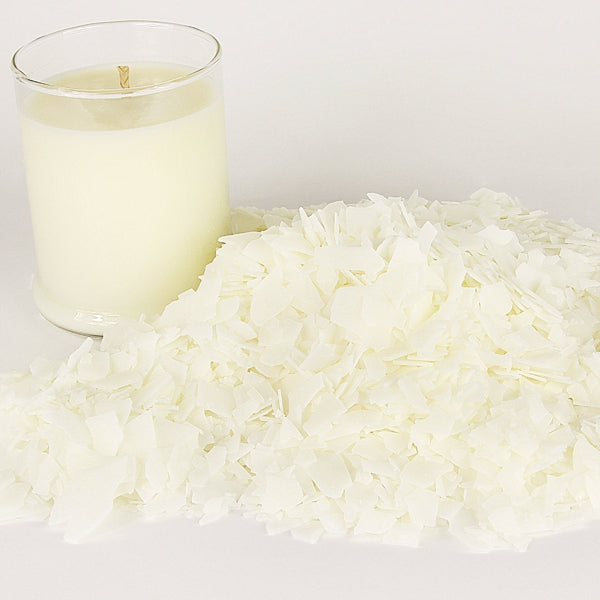Check out the World of Crystal Soy Candles and Home Fragrance Delights
Check out the World of Crystal Soy Candles and Home Fragrance Delights
Blog Article
From Wick to Wax: Comprehending the Chemistry Behind Soy Wax Candles and Their Ecological Influence
As we brighten our areas with the cozy radiance of candles, there lies a realm of complex chemistry behind the seemingly straightforward act of lighting a soy wax candle. Join us as we unravel the clinical complexities behind soy wax candles and explore their effects on our atmosphere.
Soy Wax Vs. Paraffin Wax
When comparing soy wax and paraffin wax for candle light making, it is important to comprehend the distinct attributes and benefits of each product. Soy wax is a natural, renewable source stemmed from soybean oil, making it biodegradable and environmentally friendly - home fragrance. On the other hand, paraffin wax is a result of oil refining, which increases concerns concerning its ecological influence and sustainability
Soy wax candle lights shed cleaner and send out much less soot compared to paraffin wax candles, making them a much healthier option for indoor air high quality. Additionally, soy wax has a reduced melting factor, enabling for a longer-lasting candle light that distributes scent better. Paraffin wax, on the other hand, tends to melt faster and much less cleanly, potentially launching hazardous chemicals into the air.
From a sustainability viewpoint, soy wax is preferred for its biodegradability and sustainable sourcing, straightening with the growing consumer preference for environmentally aware items. While paraffin wax has actually been a traditional selection in candle light making as a result of its affordability and convenience of use, the change towards environment-friendly choices like soy wax is obtaining momentum in the market.
Chemical Make-up of Soy Wax

Burning Process in Soy Candles
The chemical composition of soy wax directly affects the combustion procedure in soy candles, affecting aspects such as burn time, aroma launch, and click reference ecological influence. When a soy candle light is lit, the warm from the fire thaws the wax near the wick.
The combustion performance of soy candle lights is influenced by the purity of the soy wax and the top quality of the wick. Additionally, soy wax candles have a reduced environmental effect contrasted to paraffin candle lights due to their biodegradable and eco-friendly nature.

Environmental Benefits of Soy Wax

Thought about a sustainable alternative to conventional paraffin wax, soy wax provides remarkable environmental advantages that make it a preferred option amongst eco-conscious consumers. One considerable benefit of soy wax is its renewable sourcing. Soy wax is acquired from soybean oil, which is predominantly grown in the United States. The growing of soybeans helps support local farmers and minimizes the dependency on non-renewable nonrenewable fuel sources utilized in paraffin wax manufacturing. Additionally, soy wax is eco-friendly, meaning it damages down naturally without launching dangerous toxic substances right into the setting. This characteristic makes soy wax candle lights a more eco-friendly choice contrasted to paraffin wax candles, which are made from petroleum, a non-renewable resource. Soy wax burns cleaner and creates less residue than paraffin wax, find out this here adding to much better interior air high quality and reducing the need for cleansing and maintenance. Generally, the environmental benefits of soy wax line up with the growing demand for environment-friendly and sustainable products in the market.
Recycling and Disposal Considerations
Recycling and correct disposal of soy wax candles play a critical duty in maintaining environmental sustainability and lowering waste in areas and households. The first action is to make sure that the candle light has melted totally when it comes to reusing soy wax candle lights. This can be attained by enabling the candle light to melt till the wick is no more useful, and after that allowing the remaining wax cool and strengthen. As soon as the wax has actually solidified, it can be thoroughly gotten rid of from the container.

In regards to disposal, if recycling is not an alternative, soy wax candle lights are naturally degradable and can be securely taken care of in most house waste systems. Nonetheless, it is always recommended to get in touch with regional reusing centers or waste administration solutions for particular guidelines on see this here candle light disposal to make sure appropriate handling and environmental management.
Conclusion
In verdict, the chemistry behind soy wax candles reveals their ecological advantages over paraffin wax candle lights. Soy wax, obtained from soybean oil, burns cleaner and generates much less soot when contrasted to paraffin wax.
When comparing soy wax and paraffin wax for candle light making, it is crucial to understand the unique characteristics and advantages of each product (soy candles).Soy wax candle lights melt cleaner and emit much less residue contrasted to paraffin wax candle lights, making them a healthier choice for interior air top quality.Considered a lasting option to typical paraffin wax, soy wax provides remarkable environmental benefits that make it a prominent option amongst eco-conscious customers. Soy wax burns cleaner and generates less soot than paraffin wax, adding to better indoor air top quality and lowering the demand for cleaning and maintenance.In final thought, the chemistry behind soy wax candles reveals their environmental advantages over paraffin wax candles
Report this page